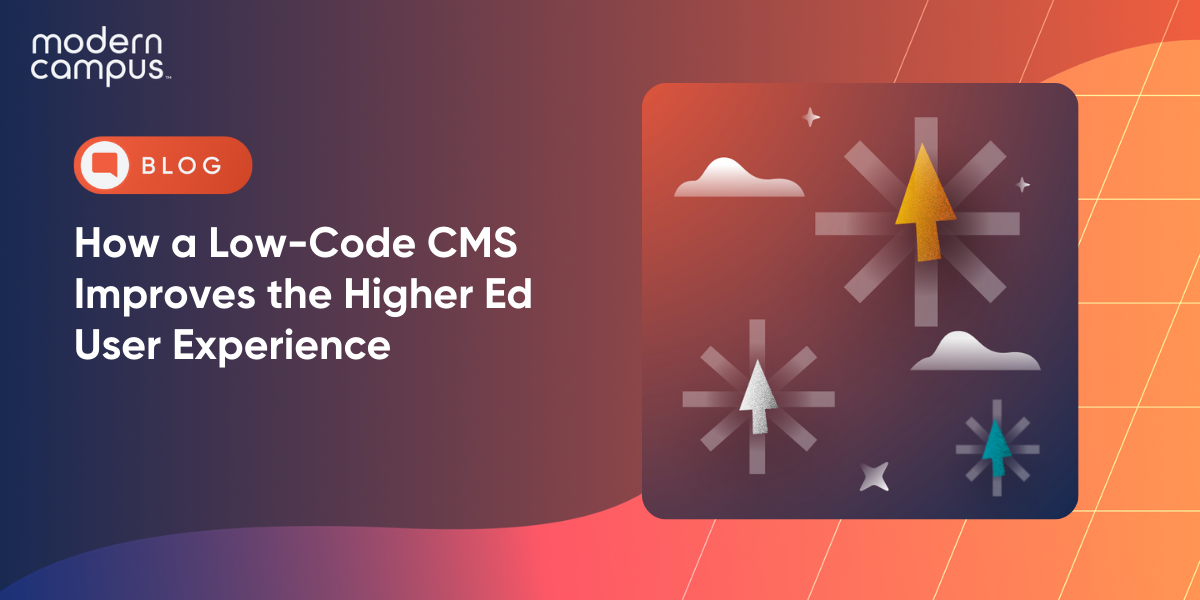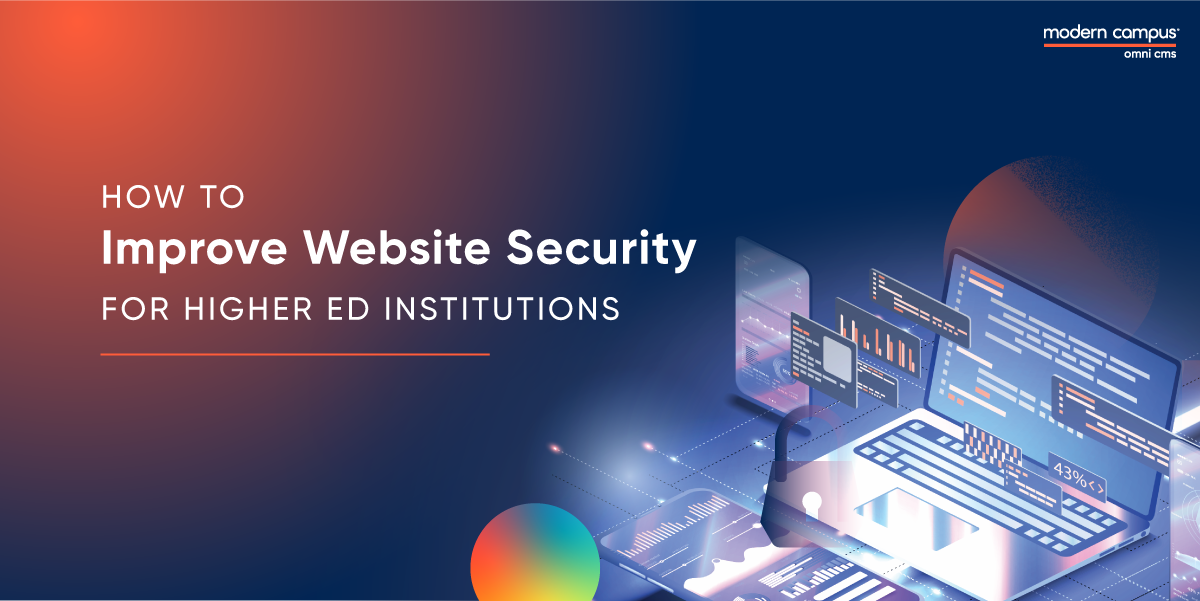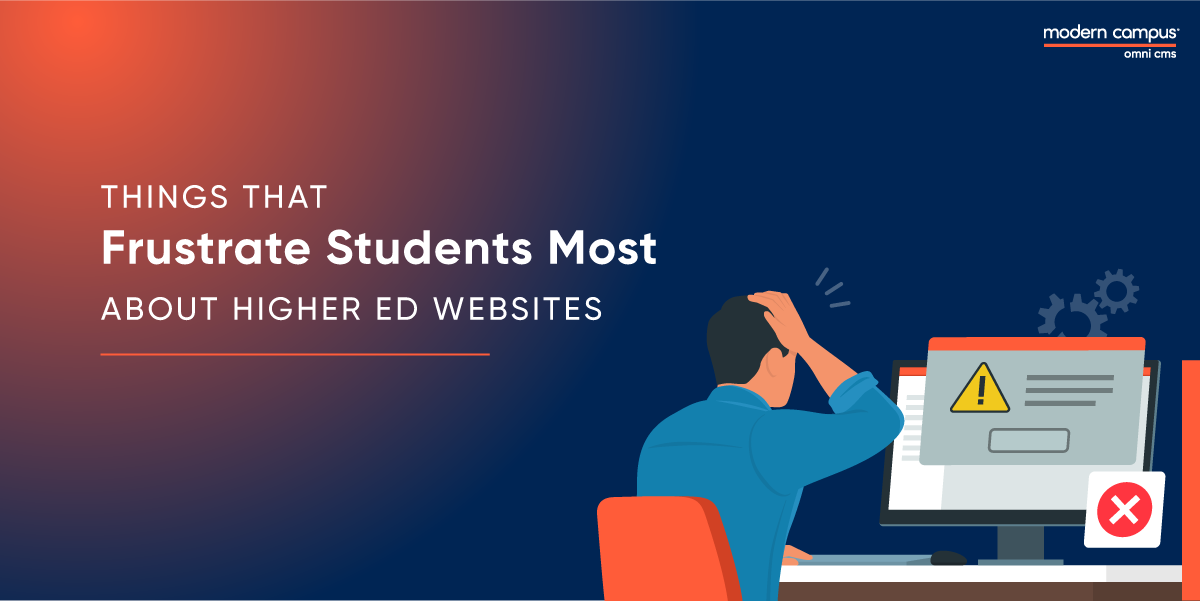3 Ways Website Personalization Drives Engagement in Higher Education
Major eCommerce giants leverage personalization to drive two major outcomes. For one, it shows customers that they’re more than a number. Additionally, well-executed personalization can present customers with opportunities more in line with their preferences.
It’s a principle that the most successful eCommerce companies have applied for years, and it continues to serve them revenue and engagement on a platter. Higher ed institutions would really benefit from adopting this mentality as well.
Higher Ed’s Administration Lacks Personalization
The modern campus is fully capable of reaping the benefits of personalization through its student engagement platforms, but many struggle trying to manage outdated systems and processes—outdated, “one-size-fits-all” learner experiences that hurt enrollments and lower student retention.
In a survey of American students, 87% consider how “technically savvy” a school is when applying. 58% of students say that, of all the companies they engage with online, their college is the furthest behind in personalizing their experience.
Students no longer take postsecondary education as the sole path to success. To attract students, your institution has to convey the relevance of its offerings in a personalized way.
Here are three ways that personalization in the back-end improves your unit’s bottom line.
1. Preference-Based Engagement Drives Enrollments
Traditional student engagement is transactional; built around a one-time purchase model that overlooks the opportunity for a meaningful lifelong relationship between institution and learner. Upon landing on a school’s web page, most visitors are greeted with generalized information that’s unlikely to grab their attention. Rather than being led to offerings aligned with their interests, they’re made to do the legwork themselves.
When prospective learners can’t see themselves in your offerings, they’re more apt to return to the search bar than continue mining your website for what they need.
Show Learners What They Want
In higher education, personalization can deliver a home page that shows prospects courses related to a search entry from their last visit, possibly even near their physical location. For an existing or returning student, this could be a well-timed email or text alerting them to a program aligned with one or more of the fields they’ve shown interest in through purchases, searches and academic history.
Digital personalization can also take the form of “learner personas” on your division’s home page. These prompt visitors to select pathways designed for specific personas that lead them along to a program option directly aligned with their needs. At the start, the funnel can be wide, prompting visitors to select from demographics like “undergraduate”, “graduate”, “studying abroad” etc. The further they progress, the narrower the pathway becomes—eventually leading them to the offering(s) best suited for them.
Students want to enroll at schools where administration is tailored to their needs. The sooner your institution can put personalization front and center, the more conversions you’ll see.
Massive Personalization and Career Pathways: The New Standard for Higher Ed
Learn how to revolutionize the student experience at your college or university with a personalized digital student engagement strategy using your most powerful tool—your website.
2. Strong Student Data Delivers Ongoing Enrollments
Every interaction a matriculated student has with your institution tells you something about their interests and career goals. There’s countless pieces of student data that can be used to promote offerings related to a student’s proven preferences, but most schools’ back-ends aren’t equipped to use it meaningfully. Though a student who’s just completed your accounting program would be a prime candidate for your new business management offering, impersonal administrative practices can lead your target audience to slip away.
Recommend Offerings to Successful Students
Kara Eldersveld, Director of Marketing & Enrollment Strategy at Rice University’s Glasscock School of Continuing Studies, said the school experienced a large uptick in re-enrollment after implementing Modern Campus Lifelong Learner, a next-generation student management system that helped market related offerings to students.
“We saw a 35% increase in course enrollments for many of our programs,” Eldersveld said. “This is also due to our focus on upsell, which is another benefit of Lifelong learning. If we see a student was interested in a particular course, we can go beyond recommending other courses and use Lifelong Learning to offer special bundle packages that allow prospective students to save money while advancing their education further.”
By suggesting courses and programs based on academic performance and interests, Rice enabled a system that keeps learners engaged and enrolled throughout a continuous learner lifecycle. Administrators don’t have to lift a finger, either—their student management system markets their offerings automatically.
3. More Personalized Support, Better Retention
Most students past and present have at least one memory of poor administration or support throughout their academic career. Only 7% of college of university students and 17% of CC students rate their career center as excellent, and 70% of students across nine global markets would urge their university to change and review its digital strategy for student administration.
Student support and administration is failing to meet the customer service expectations that learners encounter everywhere else, and the lack of personalization is largely to blame.
Streamlined Student Support
Having access to the history of a student’s interactions with administration is key to student support. It tests a learner’s patience to repeat the details of their struggle time and again to different personnel, and it’s a waste of staff time to sift and click through various programs to find that information on their own.
The onus here falls on the system. A modern campus’ back-end eliminates the need for administrative headaches on both sides by collecting and clearly presenting all of a student’s past actions with the school, so staff aren’t journeying through multiple applications to access basic information.
Michelle Fach, Director of Open Learning and Educational Support at the University of Guelph, said the school’s use of the Modern Campus system allows support staff to focus more on personalized help than on administrative heft.
“We pride ourselves in the quality of service we deliver and the personalized support that our staff provides to our clients, and Modern Campus aligns with that vision,” Fach said.
She added the next-generation SIS streamlined the student support process, allowing staff to focus on offering more timely help to greater numbers of students.
“Modern Campus lets us create internal efficiencies and eliminate the need for multiple steps, and other major inefficiencies.”
Personalization Can Save Higher Education
Students experience and enjoy a great degree of personalization almost everywhere else online. Personalized homepage promotions influence most online consumers to make a purchase, and a dearth of personalized content has the opposite effect.
Learners are customers too, and they apply the same principles when enrolling as they do when placing an order through Amazon. When schools apply the tenets of personalization in their student administration, students respond with greater engagement and retention.
Learn how Modern Campus can help you deliver the high-quality, student-centric experience today’s learners expect.
Website Design & Personalization
Last updated: March 4, 2021



